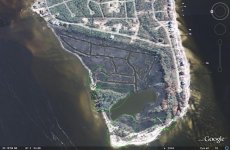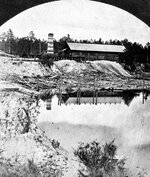ivan salis
Gold Member
- Feb 5, 2007
- 16,794
- 3,809
- 🏆 Honorable Mentions:
- 1
- Detector(s) used
- delta 4000 / ace 250 - used BH and many others too
the high ground would be the logical site for camp sites to be without a doubt --due to sudden rain storms and flooding -- camping on the high ground was a must --if you were not on the high ground you got soaked by the run off from the higher levels as well as the normal rain -- on high ground you got the basic rain but not the run off.---- when looking for camp sites seek the highest ground in the area with a nearby fresh water source ---Ivan


 Just one more thing.If you guys were looking for treasure on this island,would you start at the high ground /bluffs oak tree clusters for the shade in the summer time.Nice and cool or would you start at the lake ,at the end of the island?
Just one more thing.If you guys were looking for treasure on this island,would you start at the high ground /bluffs oak tree clusters for the shade in the summer time.Nice and cool or would you start at the lake ,at the end of the island?

 But looks like a great spot ,high ground at the end of the island...I will stay in touch....
But looks like a great spot ,high ground at the end of the island...I will stay in touch.... . Oh by the way, besides Pierre, Lafitte's other brother's name was Alexander
. Oh by the way, besides Pierre, Lafitte's other brother's name was Alexander 


